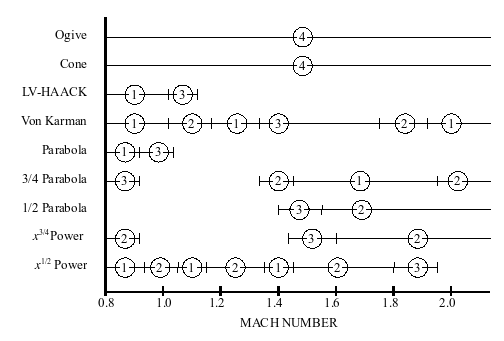I have a homemade 29mm Machbuster that I've sucessfully flown and recovered on an G78-7G. It's 17.4" tall and about 5oz unloaded.
It's made from a 13" length of thin-walled 29mm tubing and an ogive balsa nose cone from BMS. The fins were cut from 1/8" plywood from old clementine crates and such. The nose cone was hollowed out and partially filled with lead shot for stability; a washer and eyebolt where then epoxied on top. The fins were glued on with ordinary wood glue and given two fillets; the entire rocket was then covered with 3 thin layers of wood glue for strength, finishing, and a low Cd.
Pictures if you want em are
here.
Recovery is a 2" by 40" streamer stolen from my Comanche-3. It's fast but safe; this was proved by numerous test-tosses in my back yard

I swing tested it with a G78 (125g) installed; this combination of high mass in a fairly short motor is the worst possible for stability. It was perfectly stable even at fairly low speeds.
I added a 1/4" lug and an ounce of tracking powder - flour - for flight. I launched it on the friday of NERRF 5. It disappeared off the pad and flew to a simmed 4000 feet and Mach 1.07. I saw the puff of powder at ejection, and though I never saw it in the air, I found it a quarter mile away in the exact same direction as ejection. The only damage was a small chip in the wood glue on the body tube.
According to my simulations (RASP code from the Handbook with my own motor files; details on that to be posted soon), there's a surprising number of motor that can reach Mach, so long as you use a medium-length, lightweight, stable rocket.
For 18mm motors, if you keep weight under half an ounce, a D21 will get to Mach 1.13.
For 24mm motors, the F32T will reach Mach 1.2 and the E30T 1.13 with a 1-ounce rocket.
For 29mm rockets, the G77, G78, G79, and especially the G80 are all good candidates, as well as of course the HPR options. (If you're willing to risk an 80-dollar case, the I200 can approach Mach 2 with a 3-ounce rocket.)
(Simulations assumed Cd=0.5 and Mach=1118 fps; simulated rockets were 2mm greater in diameter than the motor).
/incoherent rambling












